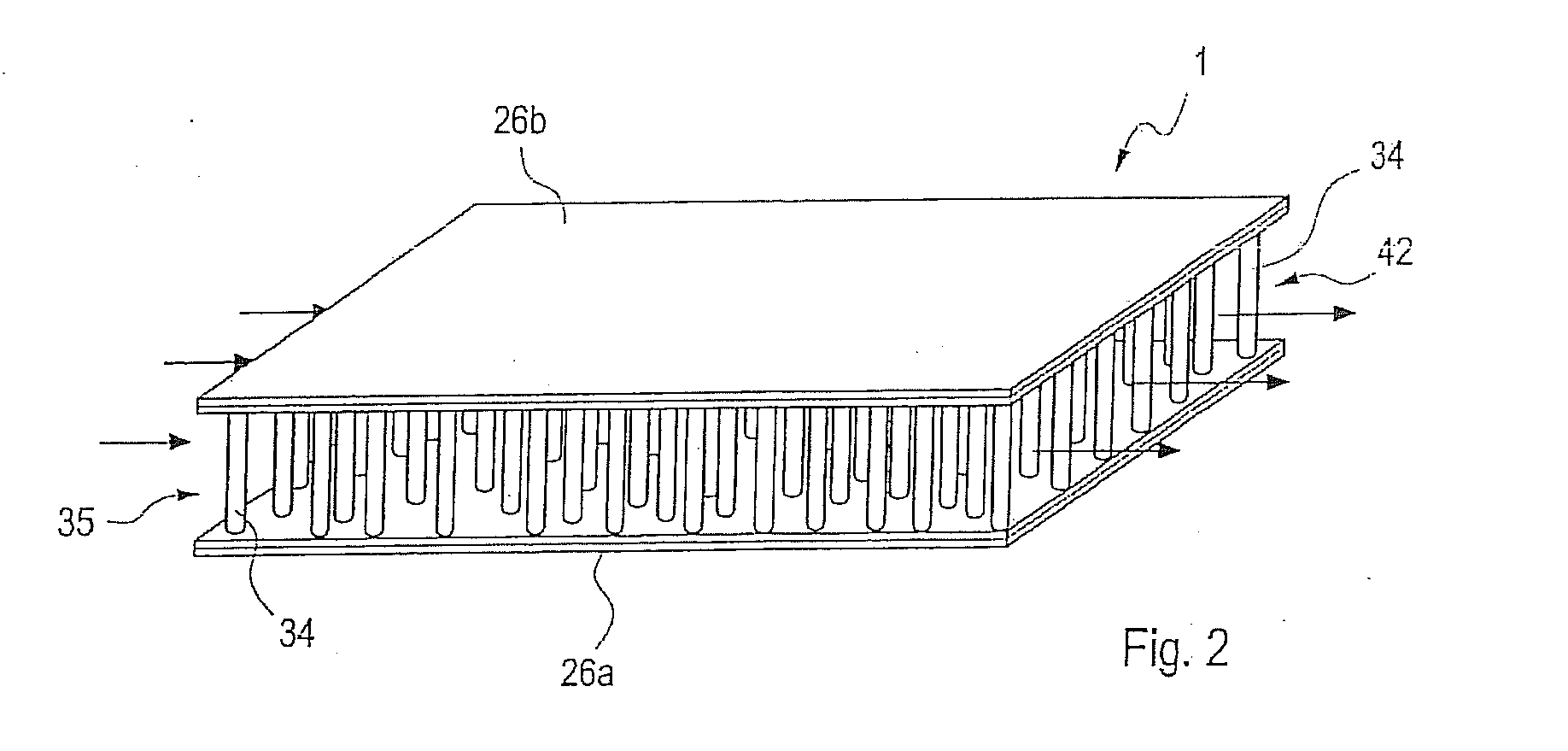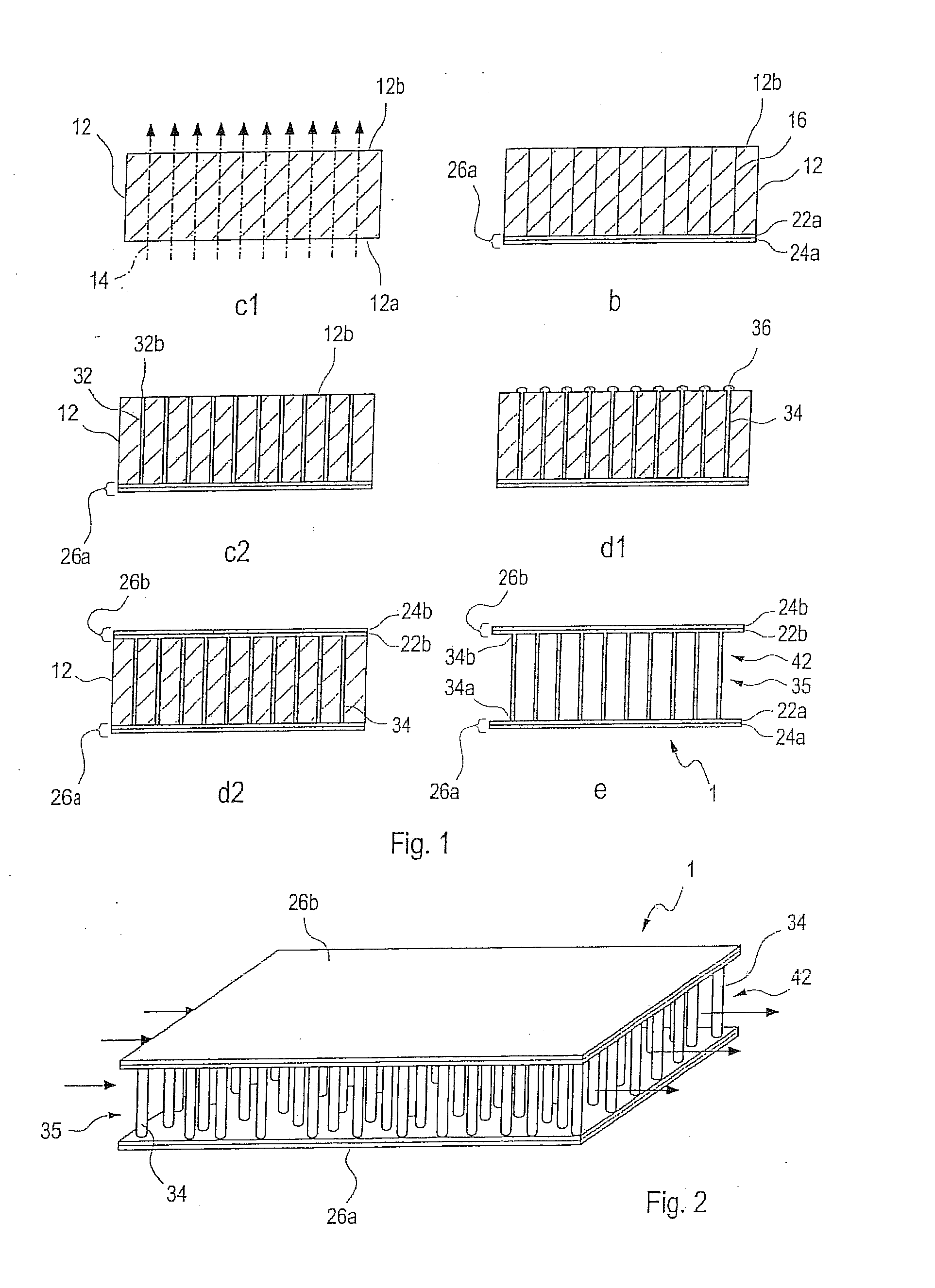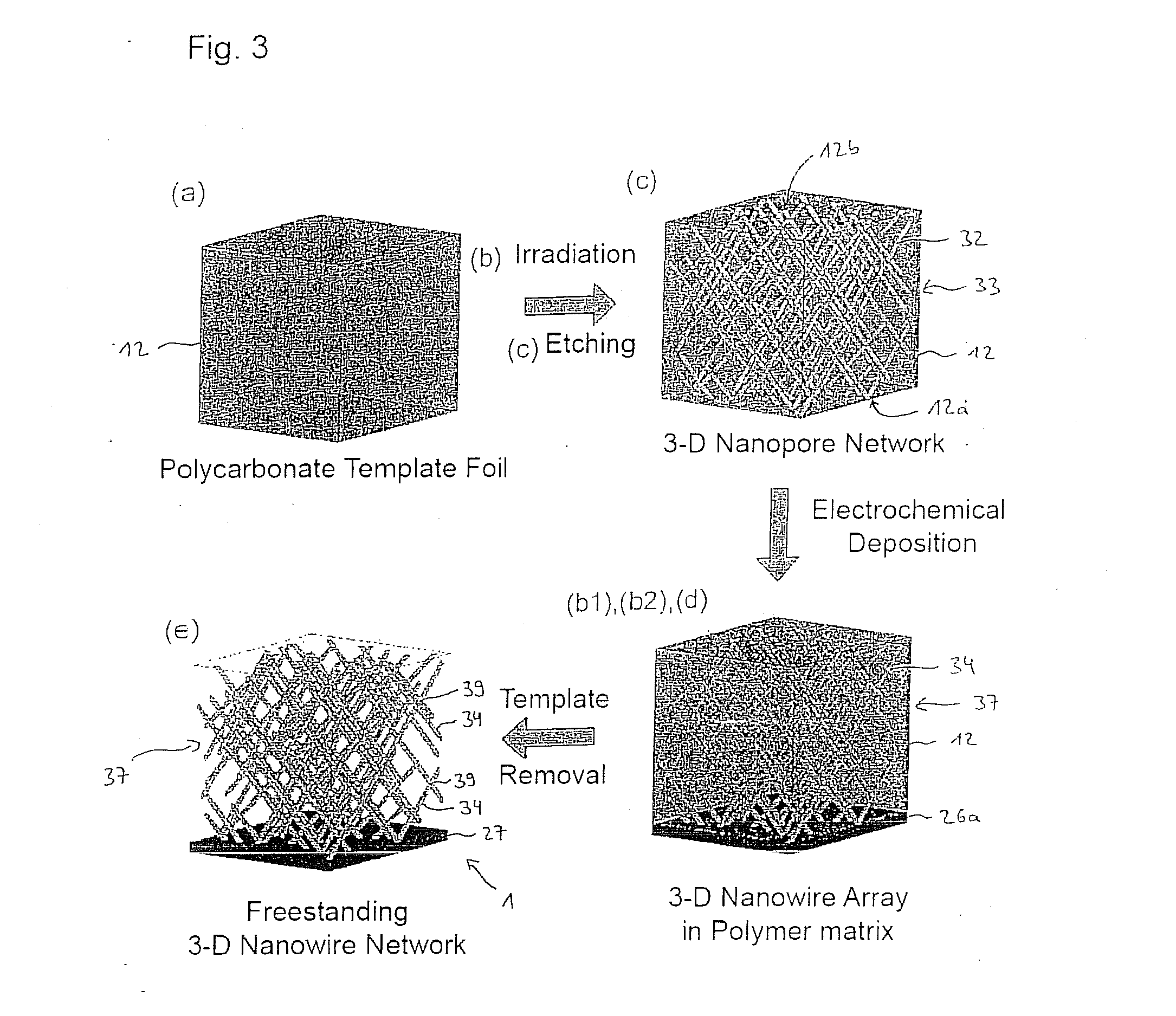Nanowires and Method for the Production there of
a technology of nanowires and nanoparticles, applied in the field of nanowires, can solve the problems of loss of contact between nanoparticles, major problem in the stabilization of these, limited catalyst surface of the reactor, etc., and achieve the effect of stable nanowire structural elements
- Summary
- Abstract
- Description
- Claims
- Application Information
AI Technical Summary
Benefits of technology
Problems solved by technology
Method used
Image
Examples
example 1
n of a Nanowire Structural Element with Parallel Nanowires
[0082]The production of nanowire structural elements is based on a template based process. The partial steps of the process are schematically presented in FIG. 1 as follows:
[0083](c1) Bombardment of the template foil with ions,
[0084](b) Application of a conductive layer,
[0085](c2) Etching of the ion tracks to form nanopores,
[0086](d1) Deposition of the nanowires and development of the caps,
[0087](d2) Deposition of the second metal layer,
[0088](e) Dissolving of the template.
[0089]Preferably the process steps are carried out in the sequence shown in FIG. 1, i.e. (c1), (b), (c2), (d1), (d2), (e). It is however possible to use a different sequence, e.g. to etch from two sides and then subsequently first apply the cathode layer partial layer ((c2) before (b)). (See, for example, FIG. 3).
[0090]With reference to FIG. 1, first a template foil 12 is bombarded with ions 14, wherein latent ion tracks 16 are generated in the substance of...
example 2
n of a Nanowire Structural Element with an Cross-Linked Nanowire Array
[0101]FIG. 3 schematically shows the production of a nanowire structural element with an interconnected nanowire array. For this, the template foil 12 is irradiated from numerous different angles with ions such that the latent tracks and later the intersecting nanopores, or respectively, the intersecting nanowires run at an angle, for example, 90°, to each other. It is to be understood that other angles are also possible.
[0102]For successive irradiation of the template foil 12 at various angles, the template foil 12 is first positioned in a corresponding jet tube at a first angle to the direction of the ion beam, e.g. in the synchrotron of the GSI, and irradiated with a predefined first ion surface density. Subsequently the template foil 12 is tilted in relation to the beam direction and again irradiated with a predefined second ion surface density. If nanowires are to be generated at more angles, the procedure is...
example 3
n of Individual Nanowires
[0104]Although it is preferred that a nanowire structural element 1, as is described based on FIG. 1 or FIG. 3, it is however, basically possible as well, to produce individual segmented nanowires 34. A schematic presentation of the production steps is shown in FIG. 4. In this case, the electrochemical deposition is arrested before the development of caps begins (d1) and subsequently the cathode layer 26a is removed. This is particularly possible if the cathode layer 26a or at least the first partial layer 22a consists of a different material than the nanowires 34. The template foil 12 is subsequently dissolved in a step (e) thus causing the individual nanowires 34 to separate (not shown).
Exemplary Parameters for the Production of the Segmenting of the Nanowires
[0105]All of the examples described in the preceding are produced with segmented nanowires 34 in accordance with this invention.
[0106]For example, a 30 μm thick, a circular shaped (r=1.5 cm) polycarbo...
PUM
| Property | Measurement | Unit |
|---|---|---|
| equilibrium voltage | aaaaa | aaaaa |
| negative absolute voltage | aaaaa | aaaaa |
| length | aaaaa | aaaaa |
Abstract
Description
Claims
Application Information
 Login to View More
Login to View More - R&D
- Intellectual Property
- Life Sciences
- Materials
- Tech Scout
- Unparalleled Data Quality
- Higher Quality Content
- 60% Fewer Hallucinations
Browse by: Latest US Patents, China's latest patents, Technical Efficacy Thesaurus, Application Domain, Technology Topic, Popular Technical Reports.
© 2025 PatSnap. All rights reserved.Legal|Privacy policy|Modern Slavery Act Transparency Statement|Sitemap|About US| Contact US: help@patsnap.com



